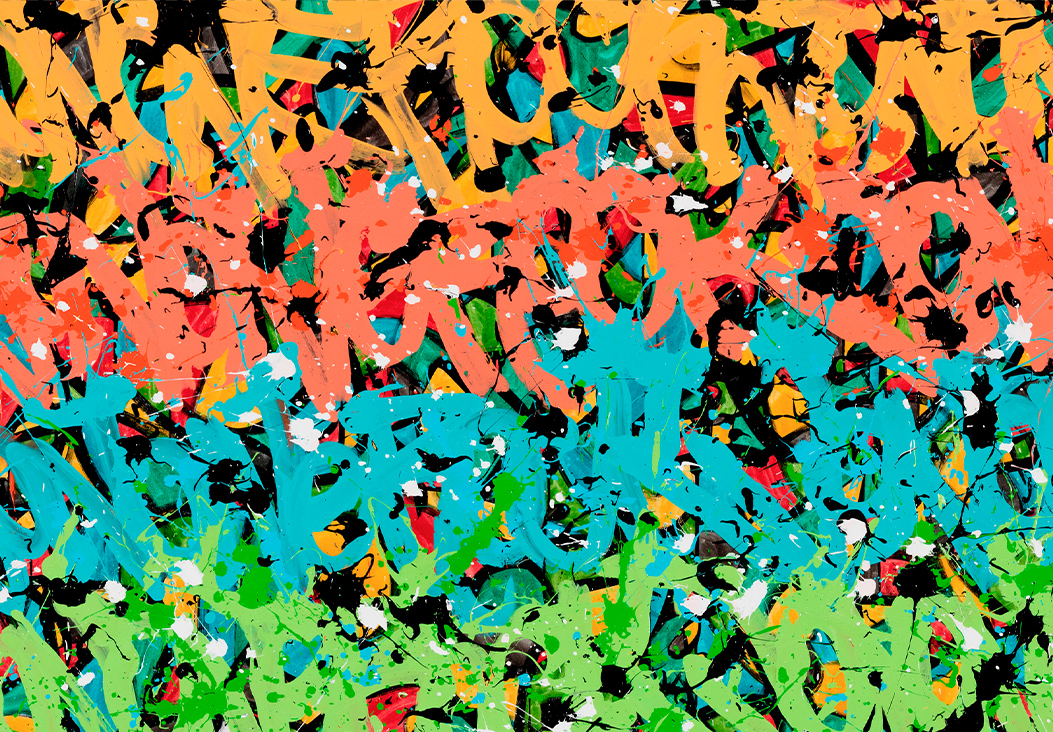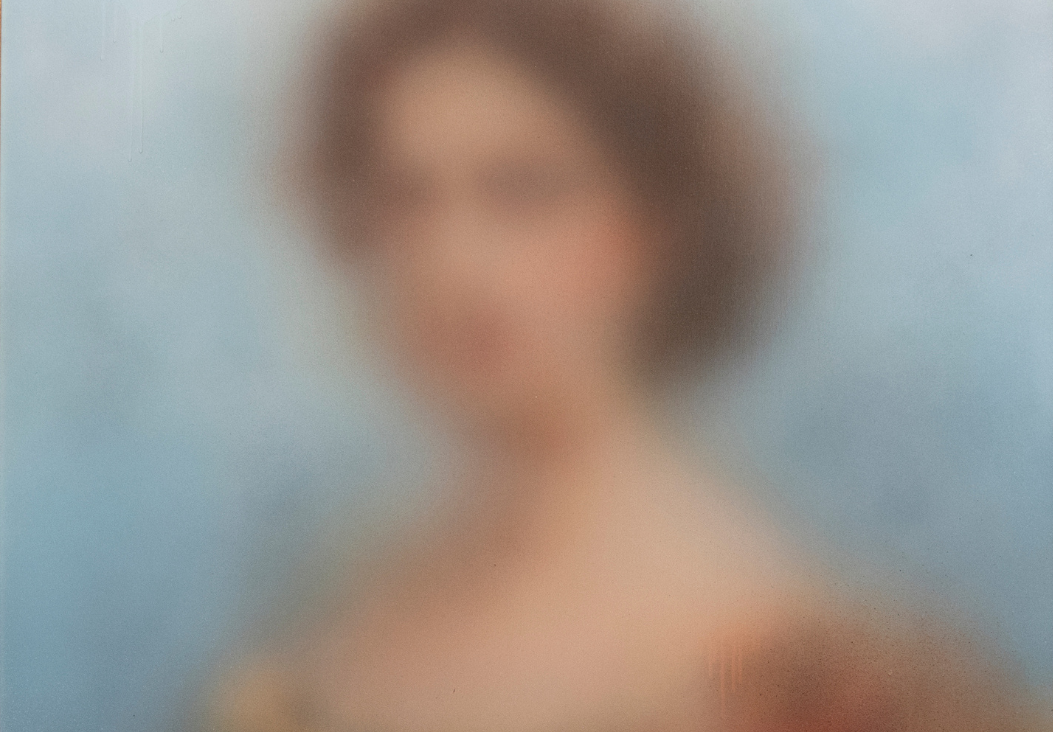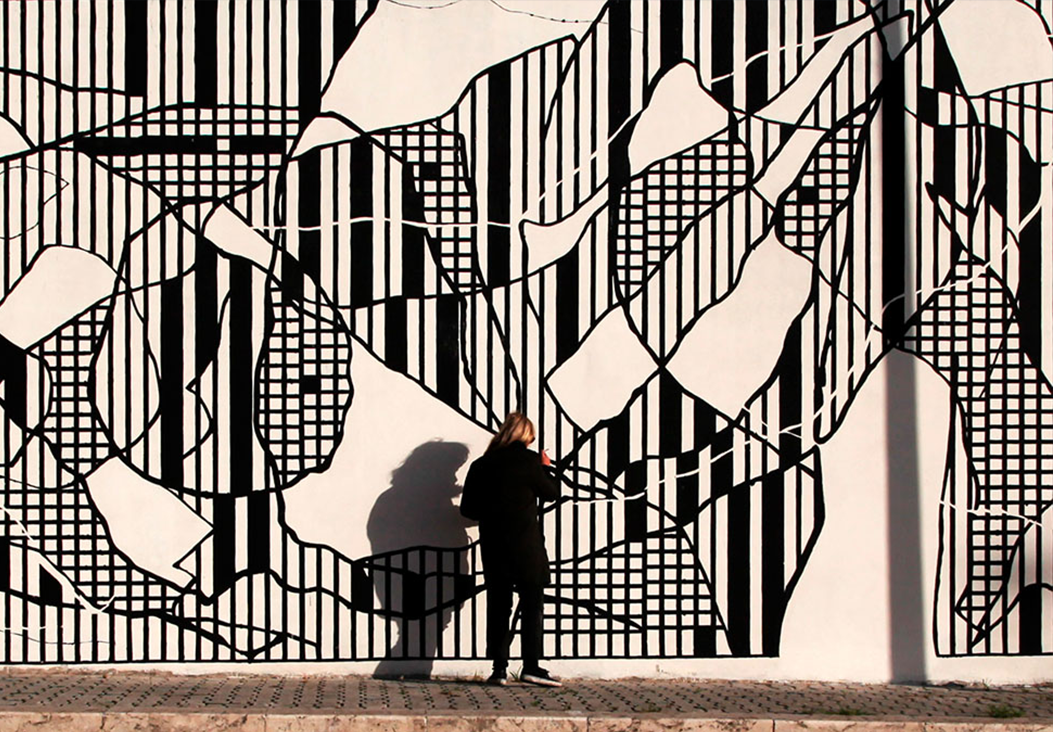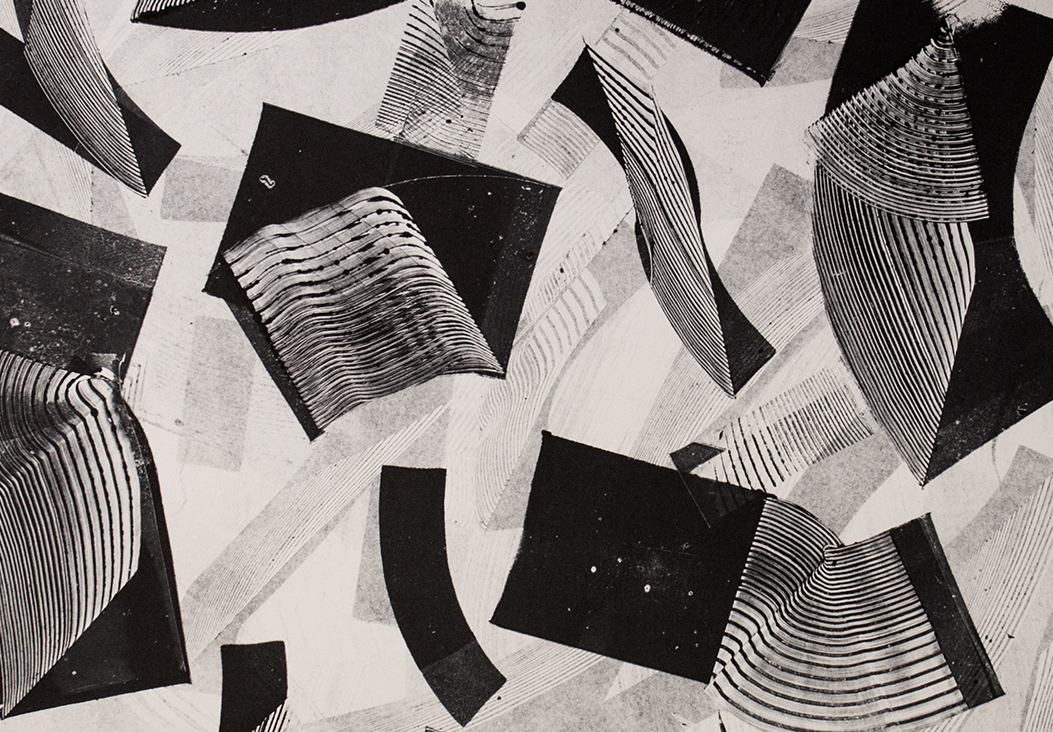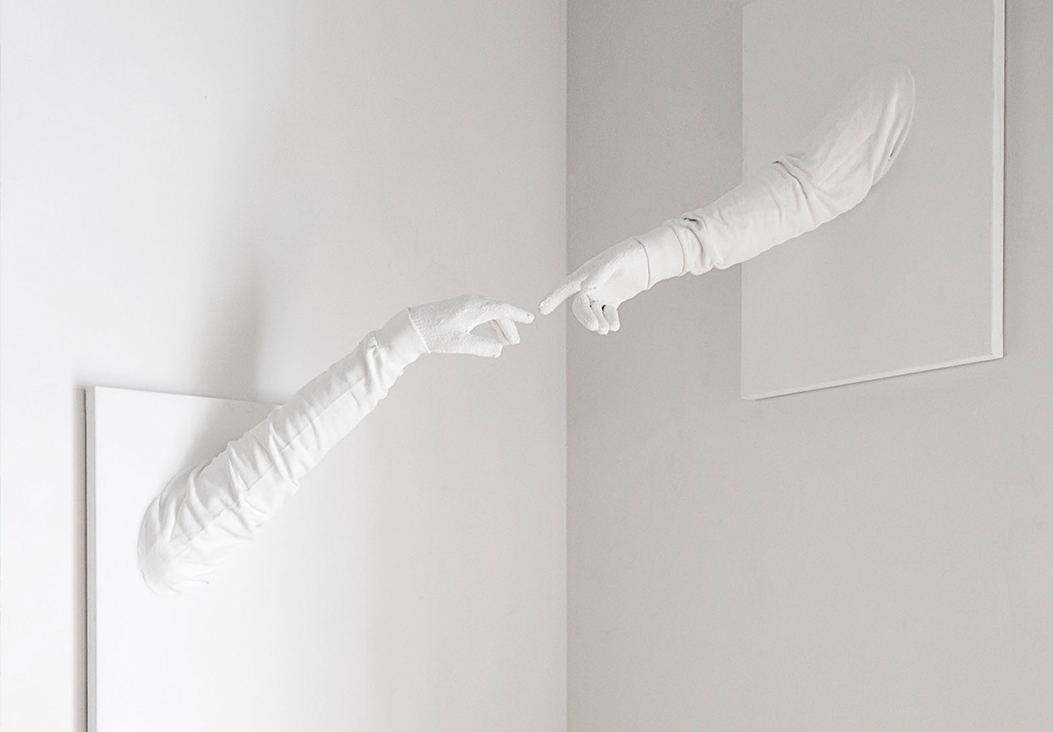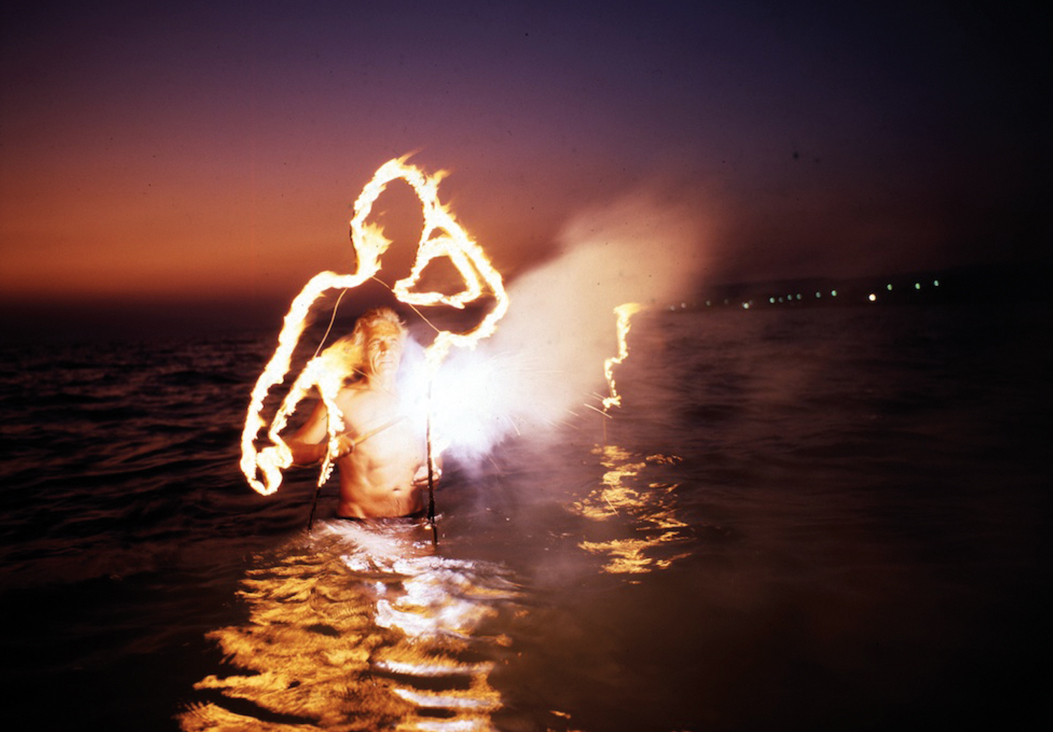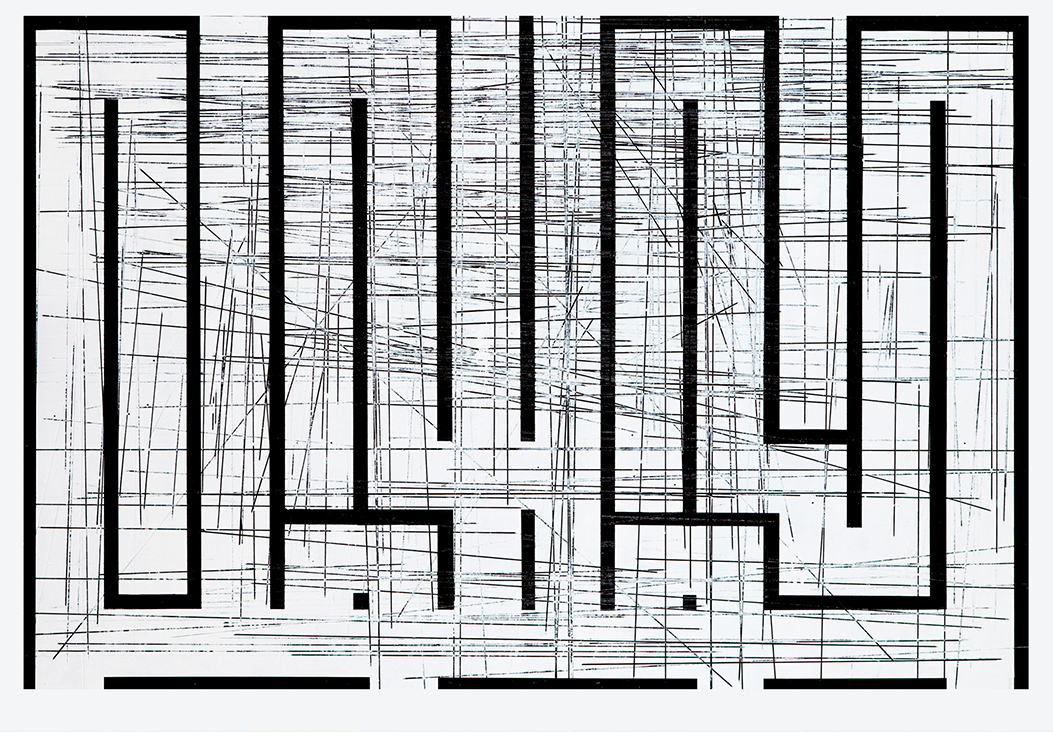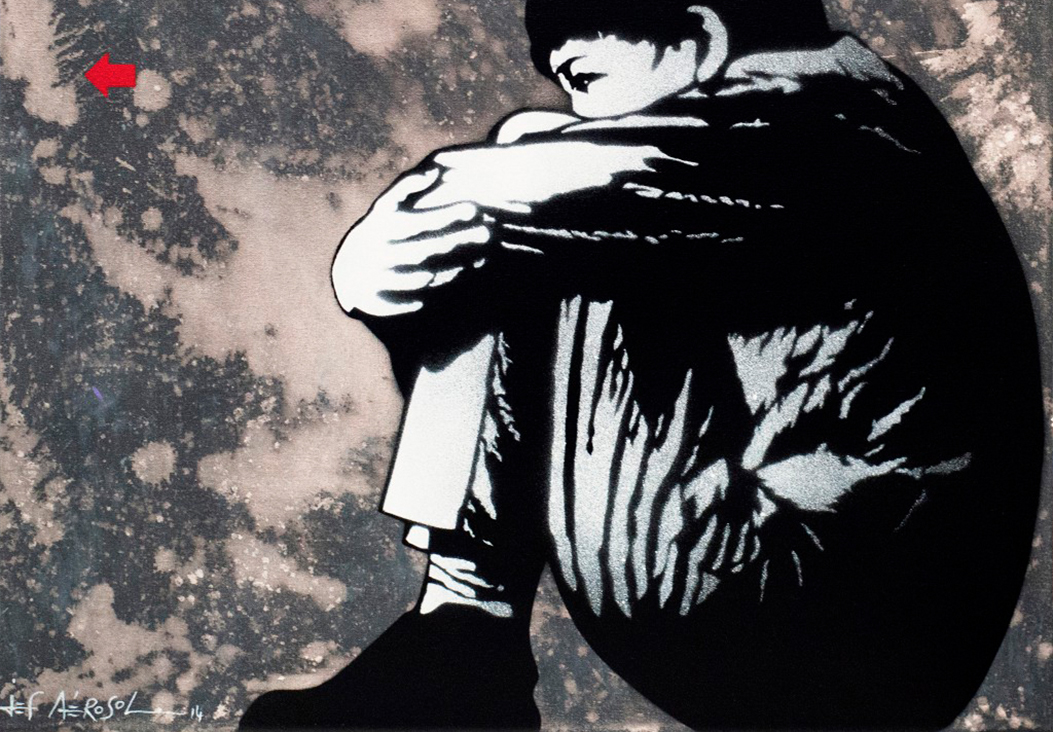Curated by Giuseppe Pizzuto
In the 1980s, Haring’s advertising posters in New York’s subway stations, the shadows created by Hambleton in the darkest corners of the city and the performances by Buggiani who, dressed as Icarus, skated among the cars of the City, created astonishment in the observers. The experimentations of the Street Artists of those years have undergone evolutions and declinations which are analyzed in this exhibition.
In Europe, and particularly in France, Jef Aérosol explores the stencil technique: his portraits, made with spray cans, are a tribute to both famous and ordinary people, who can catch our attention simply by walking down the street.
The American Mark Jenkins creates works of human features using a special adhesive tape. These installations are positioned outside, in front of shop windows, on 40-storey skyscrapers, stimulating doubt in those who observe the reality of the situations in which they are located.
Among artists working on visual perception are the Italians StenLex and Miaz Brothers. StenLex are the inventors of the stencil poster: working with the stencil on a wall, they do not remove the matrix that would make the work reproducible, on the contrary, they paint on it affirming the uniqueness of the final outcome.
In the portraits of the Miaz Brothers the distinctive features of faces, clothes and backgrounds are blurred due to the use of the airbrush: here the human mind must activate a process of memory and iconographic association.
Graffiti definitely covers one of the artist’s most controversial forms of expression in the street. JonOne, American naturalized French, makes the tag an integral part of his work. Influenced by abstract expressionism, with strong and vivid colors, he combines the impetuous gesture of the acrylic jet on the canvas with the obsessive repetition of the tag. The gesture of writing combined with color is of interest also for the French artist L’Atlas: studying and experimenting with various calligraphic techniques, he fuses writing with geometric shapes leading to the creation of mazes that hide his name.
Soft lines set apart the work of 2501, an Italian artist whose work is characterized by geometries that can sometimes recall mechanical gears while maintaining important references to nature and to space surrounding us. There are references to the coexistence of positive and negative, full and empty spaces.
The work of Shepard Fairey has been awarded and recognized internationally. Starting with the André the Giant 1989 sticker campaign, the artist has developed a recognizable style representing icons of our times, including Obama in the 2008 political campaign. Shepard Fairey affirms the need for art to take a stand on political issues of global interest regarding environmental, social and solidarity topics.
This collective exhibition stimulates a reflection on the complexities associated with the languages of street art: how to place an artistic manifestation born on the street inside the walls of a gallery?













